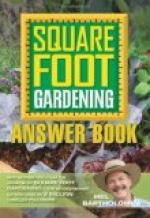Ants in Gardens.—Contrary to general belief, ants do more good than harm to a garden; but as they are unsightly on flowers, it is advisable to tie a little wool round the stems of standard roses and other things upon which they congregate. They will not crawl over the wool. A little sulphur sprinkled over a plant will keep them from it; while wall-fruit, etc., may be kept free from them by surrounding it with a broad band of chalk. Should they become troublesome on account of their numbers a strong decoction of elder leaves poured into the nest will destroy them; or a more expeditious method of getting rid of them is to put gunpowder in their nests and fire it with a piece of touch-paper tied on to a long stick.
Aotus Gracillima.—A charming and graceful evergreen shrub, whose slender branches are covered with small pea-like flowers in May. It is most suitable for the greenhouse, and delights in a soil of loamy peat and sand. Cuttings of half-ripened wood planted under glass will take root. Height, 3 ft.
Aphides, or plant-lice, make their presence known by the plant assuming an unhealthy appearance, the leaves curling up, etc. Frequently swarms of ants (which feed upon the aphides) are found beneath the plants attacked. Syringe the plant all over repeatedly with gas-tar water, or with tobacco or lime-water. The lady-bird is their natural enemy.
Apios Tuberosa (Glycine Apios).—An American climbing plant which produces in the autumn bunches of purple flowers of an agreeable odour. The foliage is light and elegant. The plant is quite hardy. It enjoys a light soil and a good amount of sunshine. It may be increased by separating the tubers after the tops have died down, and planting them while they are fresh. Height, 12 ft.
Aponogeton.—See “Aquatics.”
Apples.—Apples delight in a moist, cool climate. All apples will not succeed on the same soil, some preferring clay, while others grow best in sandy loam or in well-drained peat. For a deep, good soil and a sheltered situation the standard form grafted on the Crab-apple is generally considered to be the most profitable. For shallow soils it is better to graft on to the Paradise stock, as its roots do not run down so low as the Crab. The ground, whether deep or shallow, should receive a good mulching in the autumn; that on the deep soil being dug in at the approach of spring, while that on the shallow soil should be removed in the spring to allow the ground to be lightly forked and sweetened, replacing the manure when the dry, hot weather sets in. The best time to perform the grafting is March, and it should be done on the whip-handle system, particulars of which will be found under “Grafting.” Young trees may be planted in the autumn, as soon as the leaves have fallen. Budding is done in August, just in the same manner as roses. In spring head back to the bud; a vigorous shoot will then be produced,




